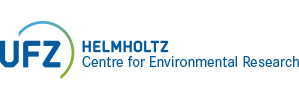Publication Details |
| Category | Text Publication |
| Reference Category | Conference papers |
| DOI | 10.5194/egusphere-egu24-10273 |
Licence  |
|
| Title (Primary) | Riverine nitrogen exports to the Wadden Sea – a travel time-based modelling approach |
| Title (Secondary) | EGU General Assembly 2024, Vienna, Austria, 14–19 Apr 2024 |
| Author | Musolff, A.; Ledesma, J.L.J.
|
| Source Titel | EGUsphere |
| Year | 2024 |
| Department | ASAM; CHS; HDG |
| Page From | EGU24-10273 |
| Language | englisch |
| Topic | T5 Future Landscapes T4 Coastal System |
| Abstract | Elevated nutrient levels in inland, coastal and marine waters have
led to negative eutrophication impacts such as algal blooms and
biodiversity loss. In the European Union, measures to reduce nutrient
pollution have been implemented as part of the Water Framework
Directive, the Nitrates Directive, the Urban Wastewater Directive and
the Marine Strategy Framework Directive. However, the water quality
targets defined in these frameworks are not always coherent and may be
too rigid when considering the future impact of climate change on
nutrient cycling. This ambiguity adds to the scientific challenge of
assessing current nutrient fluxes and concentrations and their future
dynamics under changing boundary conditions. Within the EU-funded project NAPSEA – N and P from Source to Sea, we address the continuum of nutrient fluxes from terrestrial sources in the Elbe and Rhine basins to the delivery in the Wadden Sea at the Dutch, German and Danish coasts. To model nitrogen (N) concentrations and fluxes, we use the water quality model (mQM, Nguyen et al. 2023) in a setting consisting of more than 500 mesoscale catchments with longer-term riverine N observations in the Elbe and Rhine basins. The model takes into account the storage, removal (denitrification) and release of N in the soil zone as a function of temperature and soil moisture. Importantly, subsurface transport and denitrification are based on a dynamic travel time approach using storage selection functions that explicitly account for N legacy effects. The model runs at an annual time-step, accounting for instream integration and retention of N, and is constrained against observations at the catchment outlets. In this contribution, we present the model results that allow us to identify the hotspots of N export in the Elbe and Rhine basins. We capture the decadal trajectories of N fluxes and concentrations and quantify the amount of N stored as biogeochemical legacy in soils and as hydrological legacy in groundwater. The model also makes it possible to disentangle the contributions of point vs. diffuse sources to N export in time and space as well as the efficiency of N retention. The calibrated model will allow for future projections of riverine N exports to estuaries and the Wadden Sea with the aim to differentiate the effects of climate change on the one hand, and different nutrient management scenarios on the other. |
| Persistent UFZ Identifier | https://www.ufz.de/index.php?en=20939&ufzPublicationIdentifier=30361 |
| Musolff, A., Ledesma, J.L.J., Nguyen, V.T., Ebeling, P., Sarrazin, F., Borchardt, D., Attinger, S., Kumar, R. (2024): Riverine nitrogen exports to the Wadden Sea – a travel time-based modelling approach EGU General Assembly 2024, Vienna, Austria, 14–19 Apr 2024 EGUsphere Copernicus Publications, EGU24-10273 10.5194/egusphere-egu24-10273 |
|
